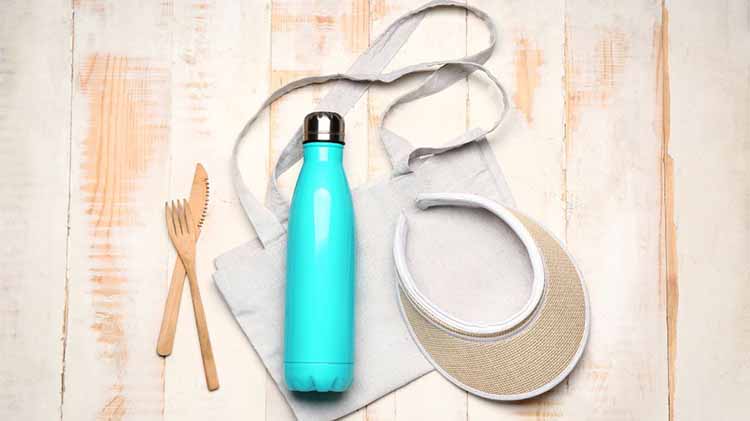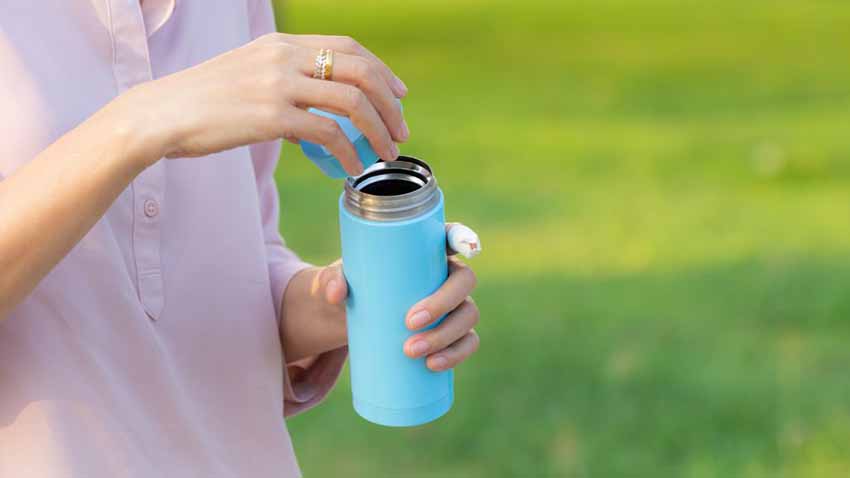Yes, reusable water bottles are more eco-friendly when used consistently. They’ve become a popular choice because they help reduce plastic waste, save money, and offer long-lasting durability.
However, you may be confused regarding the best reusable material option and how much environmental impact these bottles actually have. This article will clear up any confusion from “Is reusable water bottle more eco friendly?” to “Which material should I choose for my reusable water bottle?”
Let’s get into the details!
Is Reusable Water Bottle More Eco Friendly?
Yes, reusable water bottles are better for the environment, but their benefits depend on how often you use them and what they’re made from.
Single-use plastic bottles have a lower production footprint but create massive waste, ocean pollution, and microplastics. In contrast, stainless steel or aluminum reusable bottles last for years, prevent hundreds of plastic bottles from piling up in landfills and offer infinite recyclability.
To make a real difference, use your reusable bottle as many times as you can and recycle it properly when it’s worn out. In the long run, reusable bottles offer a more sustainable choice for both people and the planet.

Single Use vs Reusable Water Bottles- Their Impact on The Environment
In this section, you’ll get a clear idea about the key differences between single-use and reusable water bottles and their impact on the environment.
Recyclability
Most single-use plastic bottles are made from a type of plastic called polyethylene terephthalate (PET), which comes from petroleum and natural gas, which are not eco-friendly sources.
Plastic bottles can be recycled, but the reality is different. For example, out of the 35.8 million plastic bottles used every day in the UK, only 55% actually get recycled. That means about 16 million bottles a day end up in landfills.
By the way, Norway recycles 97% of their plastic bottles; we could definitely learn a thing or two from them.
Stainless steel and aluminum are 100% recyclable, and they can be recycled infinitely without losing quality. So, by choosing reusable bottles, you’re preventing hundreds of single-use plastic bottles from ending up in landfills.
Carbon Footprint During Production
Single-use plastic bottles have a lower carbon footprint during production compared to reusable bottles. A 1-litre plastic bottle has an average carbon footprint of around 103g of CO₂e.
On the other hand, reusable bottles have a higher carbon footprint upfront, depending on their material. An aluminum bottle, for example, has about 5.7kg CO₂e per pound of material.
According to research, it takes around 10 to 20 uses for a reusable bottle to break even with the carbon footprint of a plastic bottle (excluding the environmental cost of sourcing the water).
However, reusable bottles make up for their higher production impact over time because they can be used again and again. If a stainless steel water bottle replaces 50 plastic bottles, it’s already doing better in terms of carbon emissions.
However, to outperform plastic in every category of environmental impact, it needs to be used at least 500 times.
Waste and Pollution Impact
Here’s a big issue with plastic water bottles- millions of them end up in landfills or oceans every day. Over time, they break down into tiny pieces called microplastics, which can harm marine animals and ecosystems.
On the other hand, reusable bottles are a much better option because they can be used repeatedly so that fewer plastic bottles are piled up in our environment.
Water and Resource Usage
Manufacturing single-use plastic bottles requires large amounts of water and fossil fuels. For instance, it can take up to three times the water to produce a plastic bottle than it actually holds. Reusable bottles use fewer resources over time due to their longer lifespan.
What’s The Best Material for A Reusable Water Bottle?
The best material for a reusable water bottle depends on durability, safety, recyclability, and environmental impact. Here are the most common materials and their advantages:

1. Stainless Steel
Stainless steel bottles are durable, long-lasting, and resistant to rust and corrosion. They can handle hot and cold liquids while maintaining temperature for long periods. Also, stainless steel is 100% recyclable and can be reused infinitely without losing quality.
However, their initial production has a higher carbon footprint, so try to use it repeatedly to offset this impact.
Best for: Durability, temperature retention, and long-term sustainability.
2. Aluminum
Aluminum bottles are lightweight and highly recyclable. However, most aluminum bottles require an inner lining (usually plastic or epoxy) to prevent the metal from reacting with liquids, which can complicate recycling.
Still, aluminum remains one of the most recyclable materials globally and is excellent for reducing waste.
Best for: Lightweight portability and recyclability.
3. Glass
Glass bottles are non-toxic, easy to clean, and don’t retain flavors. They’re a safe choice for health-conscious users since glass doesn’t leach chemicals into liquids. While glass is recyclable, it’s energy-intensive to produce and recycle.
Best for: Pure taste, chemical-free use, and indoor settings.
FAQs
Can Reusable Water Bottles Be Recycled?
Stainless steel, aluminum, and glass bottles are fully recyclable. But plastic reusable bottles may have limited recyclability.
How Do Reusable Water Bottles Save Money?
Yes, reusable water bottles save money in the long run. A $20 reusable bottle can save you approximately $6,180 over five years by eliminating the need to repeatedly buy single-use plastic bottles.
Verdict
Hopefully, you’ve got the answer to your question- Is reusable water bottle more eco friendly?
Reusable water bottles are indeed more eco-friendly when you use them repeatedly. Although their production has a higher initial carbon footprint compared to single-use plastic bottles, repeated use offsets this impact over time.
Choose materials like stainless steel, aluminum, and glass for infinite recyclability and reduce plastic waste.

